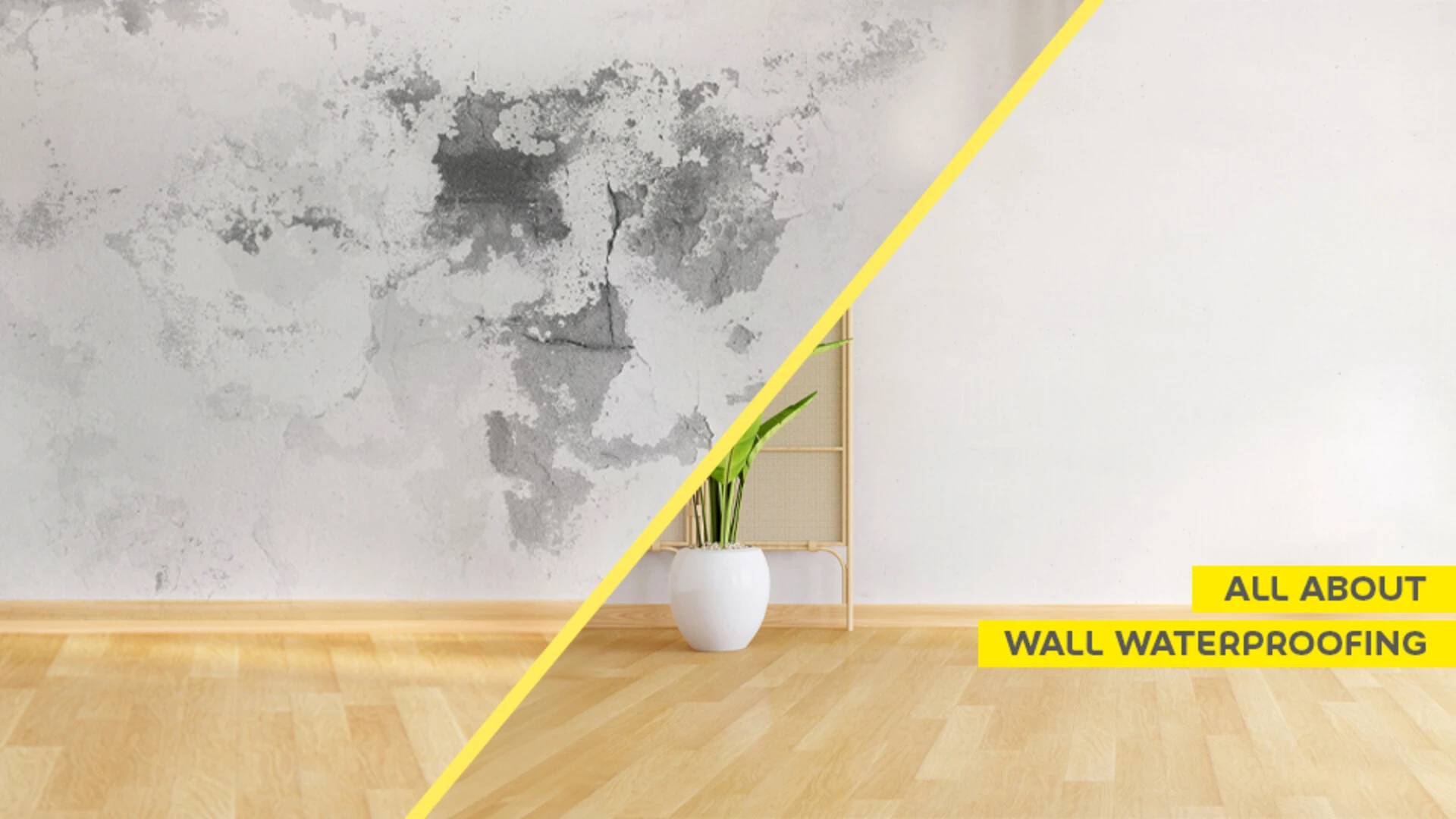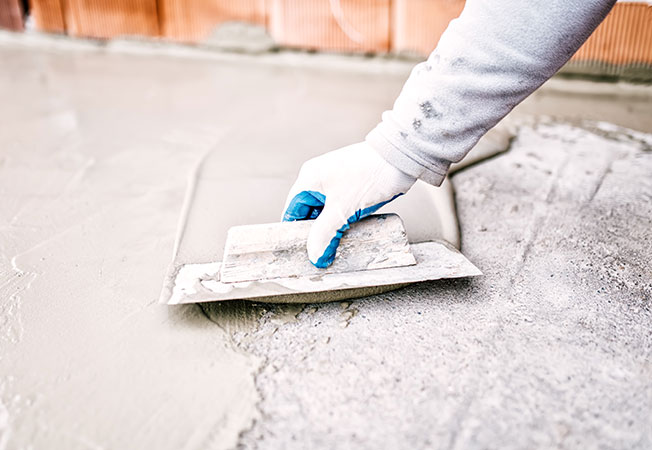The Risks of Ignoring Water Solutions in Your Home
How Waterproofing Works: A Detailed Consider Techniques and Technologies
Waterproofing is important for protecting structures from moisture-related damages. It entails numerous methods and innovations that create barriers versus water invasion. Conventional methods, such as compressed clay, exist side-by-side with modern-day advancements like liquid-applied membranes. Understanding the subtleties of these techniques is important for effective application. Nonetheless, the efficiency of any waterproofing solution pivots not only on the strategies utilized but additionally on continuous maintenance and examination. What are the key variables that affect long-term performance?
Recognizing the Essentials of Waterproofing
Waterproofing is a crucial process that safeguards frameworks from water invasion, which can bring about considerable damages over time. This technique involves the application of different products and techniques created to create a barrier versus dampness. The primary objective is to stop water from permeating surface areas, which can create wear and tear, mold and mildew development, and structural instability.Various elements affect the selection of waterproofing method, including the sort of framework, its area, and environmental conditions. Comprehending the physics of water activity and the homes of various products is critical in selecting an efficient waterproofing solution.Effective waterproofing not just safeguards structures yet additionally boosts their longevity and integrity. Usually, it is incorporated right into the style stage of building and construction to assure comprehensive protection. As awareness of water-related issues grows, the significance of comprehending waterproofing basics ends up being progressively clear to designers, building contractors, and residential or commercial property owners alike.
Conventional Waterproofing Methods
Conventional waterproofing methods have been made use of for centuries, counting on tried and true methods and materials to safeguard frameworks from water damages. One of the oldest methods includes making use of clay, which, when compacted, develops a natural obstacle versus wetness. Furthermore, asphalt, a sticky, black product originated from oil, has been used for its waterproof properties, often used to roofings and foundations.Another method involves the application of lime-based plasters, which give a breathable layer that enables dampness to get away while avoiding water access. Thatch roof, a conventional approach still seen in some cultures, supplies exceptional waterproofing due to its snugly packed straw layers.Moreover, making use of stone and block has been famous, as these materials are naturally immune to water when appropriately installed. Generally, traditional waterproofing techniques stress the significance of picking suitable products and construction methods to boost toughness against water invasion.
Modern Waterproofing Technologies
Innovations in modern waterproofing innovations have actually revolutionized the method frameworks are shielded from water damage. Innovative techniques such as liquid-applied membrane layers and advanced sealants have improved the performance and convenience of waterproofing solutions. These innovations permit smooth application, lowering the risk of leaks and guaranteeing extensive insurance coverage over intricate surfaces.Moreover, the integration of wise innovations, such as dampness sensing units and automated surveillance systems, makes it possible for real-time assessment of waterproofing performance. This proactive approach helps with timely maintenance and reduces long-term repair work costs.Additionally, developments in spray-applied finishings use quick application and outstanding adhesion, adapting to numerous substrates while supplying robust defense. Strategies like polymer-modified systems better boost adaptability and longevity, making them ideal for varied atmospheres. In general, modern waterproofing technologies not just alleviate water invasion but additionally add to the durability and sustainability of structures, noting a substantial change in the industry.
Products Utilized in Waterproofing
The effectiveness of waterproofing remedies greatly relies on the products utilized in their application. Numerous materials are used to produce obstacles against water access, each with special residential properties suited for various atmospheres. Generally utilized products include membrane layers, coverings, and sealants.Liquid-applied membrane layers, frequently made from polyurethane or acrylic, create a seamless obstacle that adapts to complicated surfaces. Sheet membranes, typically built from rubber or polycarbonate, offer toughness and are perfect for bigger locations. Additionally, cementitious waterproofing products, made up of cementitious compounds, supply excellent bond and flexibility.Sealants made from silicone or polyurethane are important for joints and joints, guaranteeing detailed security. Sophisticated products, such as geo-composite membranes, integrate numerous functions, improving efficiency. Overall, the choice of waterproofing click for more products is vital in accomplishing durable and effective water resistance, tailored to certain task requirements and environmental problems.
Usual Applications of Waterproofing
Waterproofing plays a vital duty in numerous sectors, guaranteeing the long life and honesty of frameworks. Common applications include property options that shield homes, commercial infrastructure that safeguards companies, and commercial setups that need durable defense against moisture. Comprehending these applications highlights the value of waterproofing in preserving both safety and security and capability throughout various settings.
Residential Waterproofing Solutions
Several homeowners face challenges with moisture intrusion, making effective residential waterproofing solutions vital. Various methods exist to resolve this concern, consisting of exterior and interior waterproofing systems. Interior solutions frequently involve the application of sealers and coatings to cellar wall surfaces, which assist protect against water infiltration. Exterior methods generally include the installment of drain systems and water resistant membranes that draw away water far from the foundation.Additionally, property owners may consider sump pumps to get rid of water build-up and dehumidifiers to control humidity degrees. Correct grading and making use of rain gutters also play a crucial function in taking care of water circulation around the home. By implementing these methods, house owners can substantially decrease the risk of water damages and mold development, making sure a dry and secure living atmosphere.

Commercial Facilities Defense
Reliable waterproofing remedies play a critical role in the protection of commercial infrastructure. Water Solutions Omaha. These techniques are important for protecting buildings, car parking structures, and bridges from water damage, which can compromise architectural honesty and cause expensive repair work. Common applications include the installment of membrane layers, finishes, and sealants that create obstacles versus wetness infiltration. Locations such as cellars, roofings, and exterior wall surfaces are usually focused on to ensure longevity and durability. In addition, waterproofing systems can improve energy performance by stopping water-related problems that may cause mold development and degeneration. By executing robust waterproofing actions, home owners can shield their investments and keep operational performance, eventually adding to the general sustainability of commercial centers
Industrial Applications Overview
While various industries deal with one-of-a-kind challenges, the need for reputable waterproofing remedies continues to be a constant in industrial applications. Industries such as manufacturing, building and construction, and power frequently run into settings where moisture exposure can jeopardize structural stability and operational effectiveness. In producing facilities, waterproofing is important for shielding equipment and products from water damages. In building, it safeguards foundations and basements against groundwater infiltration. The energy sector relies upon waterproofing for the protection of tools in hydroelectric plants and overseas frameworks. In addition, food handling markets use waterproofing to guarantee hygiene and conformity with safety and security criteria. Generally, efficient waterproofing services are vital for enhancing resilience, safety, and performance throughout different industrial setups.
Upkeep and Durability of Waterproofing Solutions
Although waterproofing services are designed to supply lasting security against dampness breach, normal upkeep is vital to assure their performance and long life - Basement waterproofing Omaha. Regular assessments play a significant duty in identifying prospective issues such as fractures, peeling off, or indications of water damages. Attending to these troubles quickly can protect against additional damage and costly repairs.Additionally, cleaning up the surface area of waterproofed locations aids remove dust and particles that could click here to find out more jeopardize the honesty of the waterproofing barrier. It's likewise suggested to reapply protective finishings or sealers as recommended by producers to keep ideal performance. Ecological variables, such as UV direct exposure and extreme weather condition problems, can influence the lifespan of waterproofing materials, making routine analysis essential
Frequently Asked Concerns
Can Waterproofing Be Applied in Winter?
The inquiry of applying waterproofing in winter increases problems concerning attachment and curing. Numerous products may not do at their finest in reduced temperature levels, demanding mindful option and factor to consider of specific guidelines for effective application.
How Long Does Waterproofing Generally Last?
The duration of waterproofing efficiency varies based on materials and environmental factors. Generally, it can last from five to 10 years, yet normal upkeep and he has a good point examinations are vital to assure peak efficiency and long life.
Is Do It Yourself Waterproofing Effective and Safe?
The efficiency and security of DIY waterproofing depend on various variables, consisting of worldly high quality and application technique. While some people attain sufficient outcomes, others might experience issues that compromise lasting security and structural honesty.
What Are the Indicators of Failing Waterproofing?
Indications of failing waterproofing consist of noticeable water stains, peeling off paint, mold and mildew growth, stuffy smells, and dampness in wall surfaces or ceilings - Landscape drainage Omaha. These indicators suggest endangered obstacles, necessitating prompt assessment and possible removal to stop more damages
How Do I Select the Right Waterproofing Professional?
